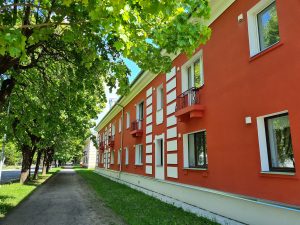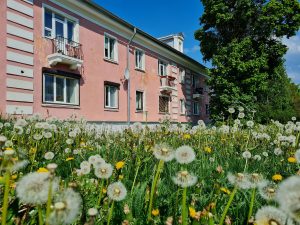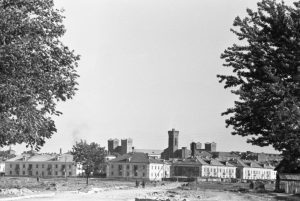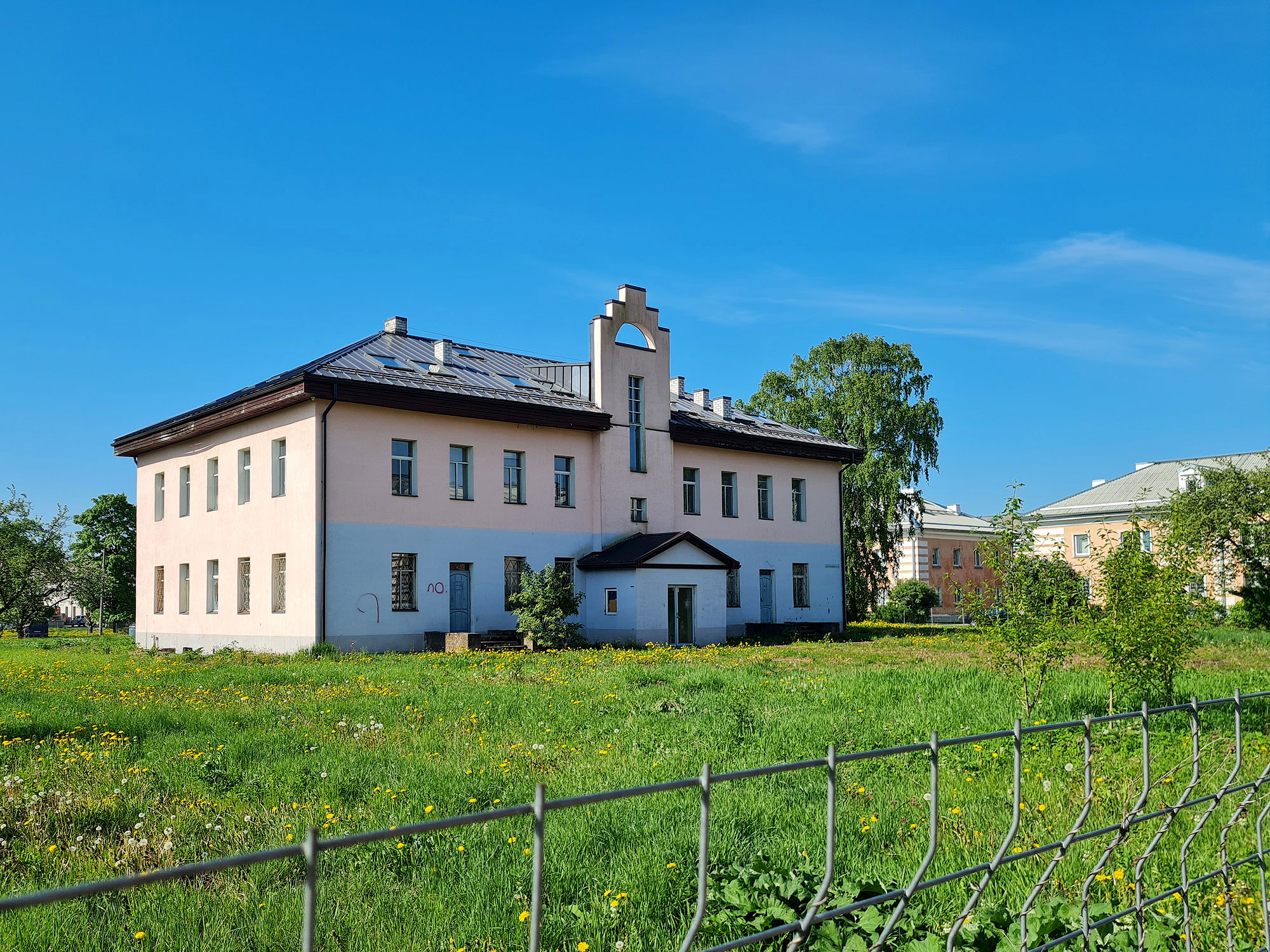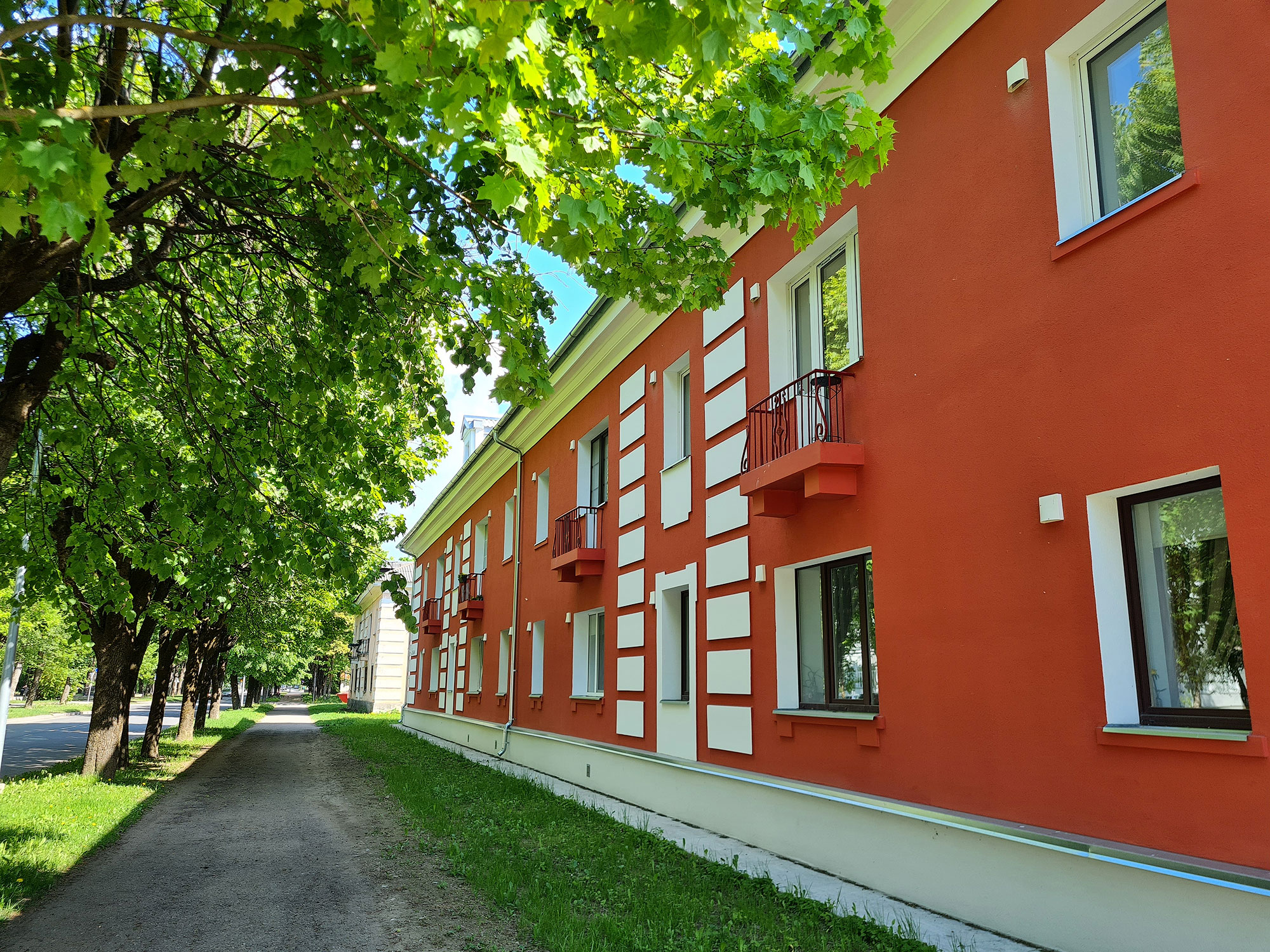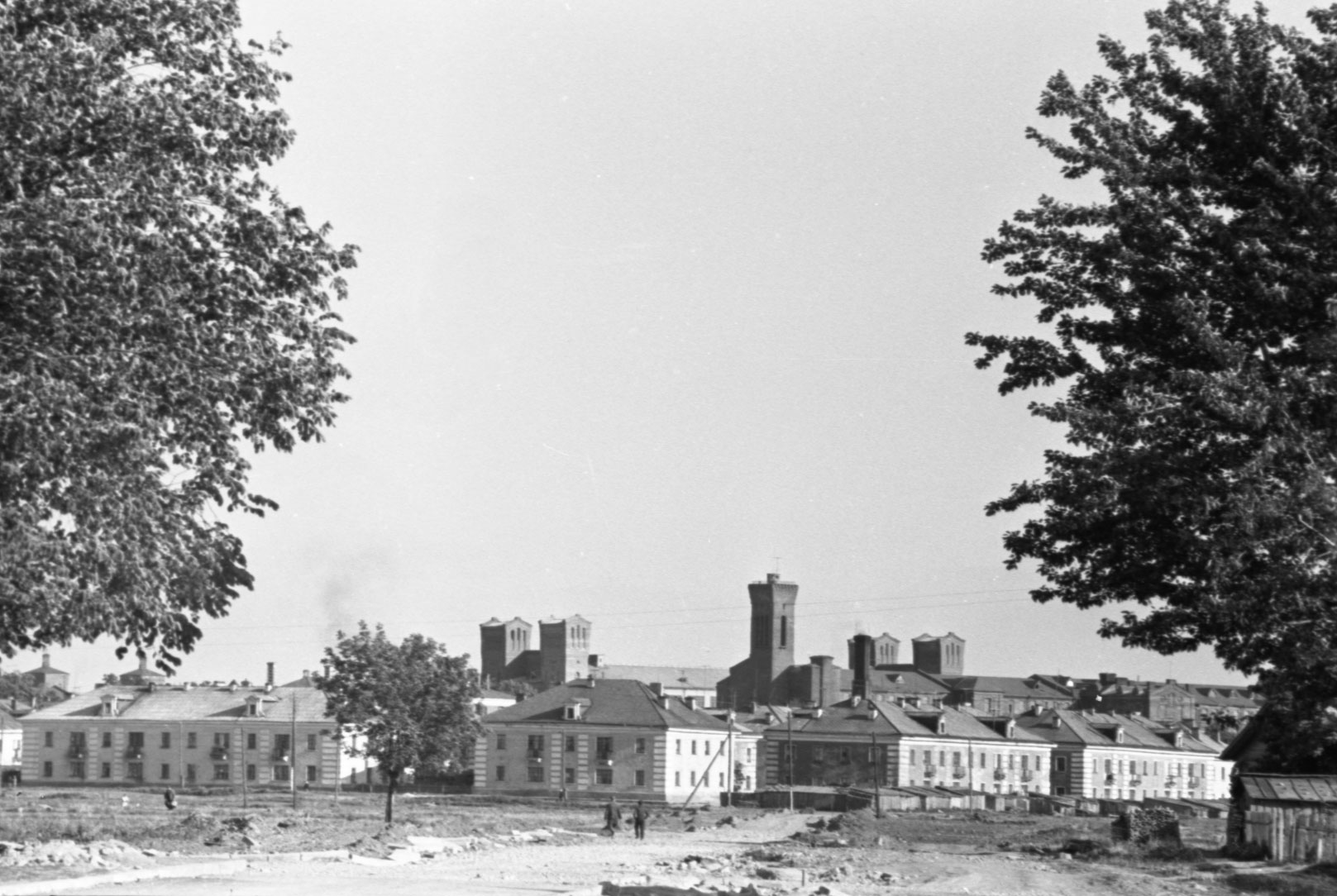The plan of this fully realized Stalinist residential quarter was developed back in 1949 by the architect Anton Soans. These were also the first new buildings built in the Kreenholm district after the war.
The symmetrically built quarter is lined with straight streets, the two-storied residential buildings were built there using a standard layout of that time. The former kindergarten building is located in the centre of the block of buildings, which was common for the design principles of that time. Unlike this quarter, most of the Stalinist residential blocks in Narva remained unfinished.
Post-war Narva was a city of young girls and German prisoners of war, who took part in building this quarter too. The girls came here from the suburbs of Narva, Leningrad or the Pskov region, often they were orphans. These girls revived Kreenholm and became the first weavers. They certainly often sang the well-known “March of the Enthusiasts” from the 1940 movie “The Bright Way” with the famous line: “The dream is wonderful, yet unclear.”
The biggest problem in the city of Narva after the war was the living space because about 95% of the city was destroyed. A woman who was born in Narva in 1932 and lived there after the war said: “After the war, we lived in dugouts. It was just a bunker above the ground, it was just like a shack.” In 1948, Narva had less than two square meters of living space per person. People had to seek shelter in the ruins of buildings or in the stairwells of houses under construction. At the same time that the luxurious quarter in Kreenholm was being built, another 120 families were living in dugouts.
It is hard to disagree with a woman who settled in Narva in 1944: “I think the house is good because there is a roof. If there is no roof, then there is no life, and then there is no joy, and then there is nothing. A house is like your mother who cannot be replaced.” That’s how she answered when asked years later if the residential buildings in Narva are too plain and too similar to each other.
Post-war life was cheerless in Kreenholm too, although the barracks had mostly survived through the war. An Estonian woman born in 1930, who came back with her mother in 1944, recalls that the family’s house by the market square had burned down. Several generations of women in her family had been weavers and eventually she and her mother found their new home in the Kreenholm barracks: “There was a bigger room and then a smaller one. And all the rooms followed the same pattern – narrow-wider, narrow-wider. So, we chose a smaller room. The window was boarded up. And a tiny piece of glass at the top was the only source of light. When we chose this room, there were no other rooms like that with glass. Well, where could you get glass after the war? There was no glass. There was no heating. There were no trees.” That’s why the young girls in Kreenholm spent their days off working hard in the peat bog.
For those children who were not used to the noise of the waterfall, life in Kreenholm was quite rough. A girl born in 1944, who moved to Narva when she was five years old and lived with her mother in a dormitory in Georgi factory, right next to the waterfall, recalls that she asked her mother to turn off the waterfalls. The water noise at night was too loud. At that time, it was heard all the way in Peetri Square, which is 2,5 km far from Kreenholm. Nowadays, the waterfalls are rarely open, and there is so much less water flowing in them than in the past.

